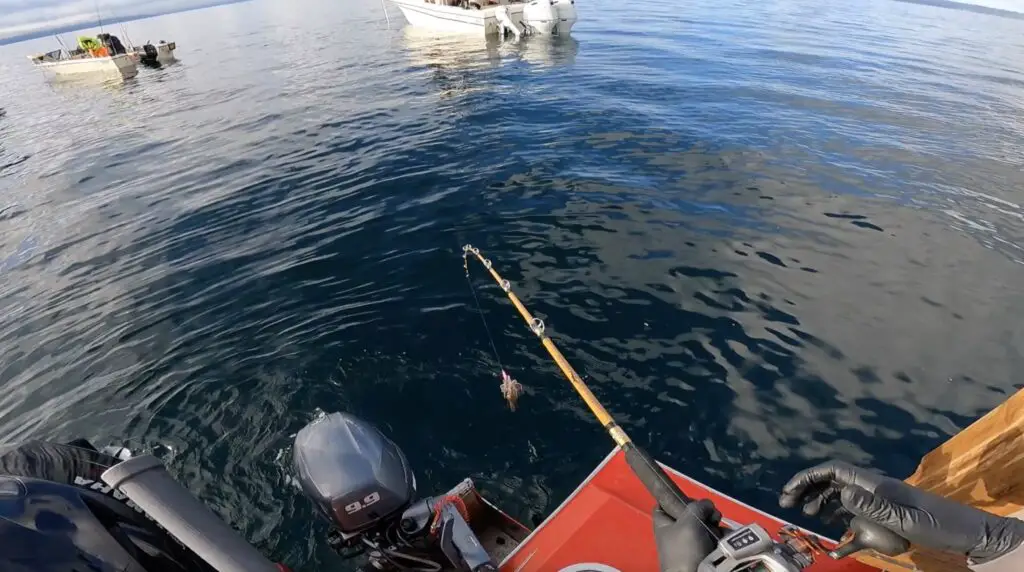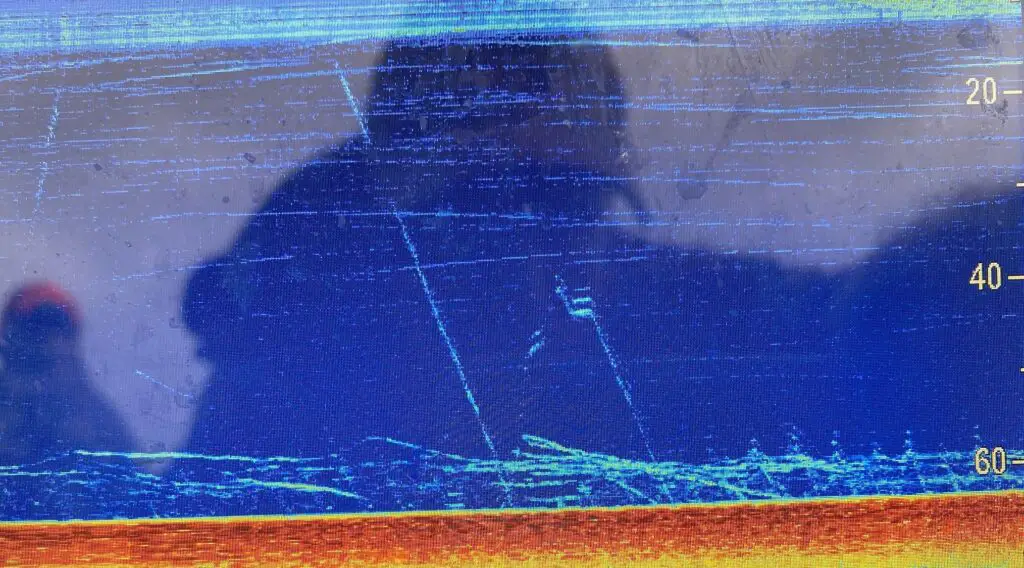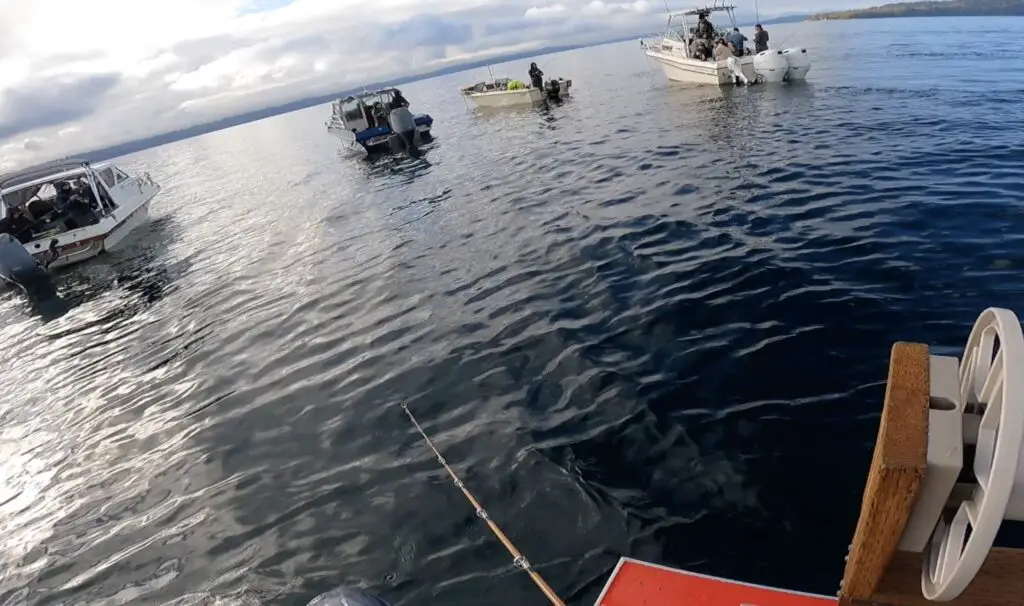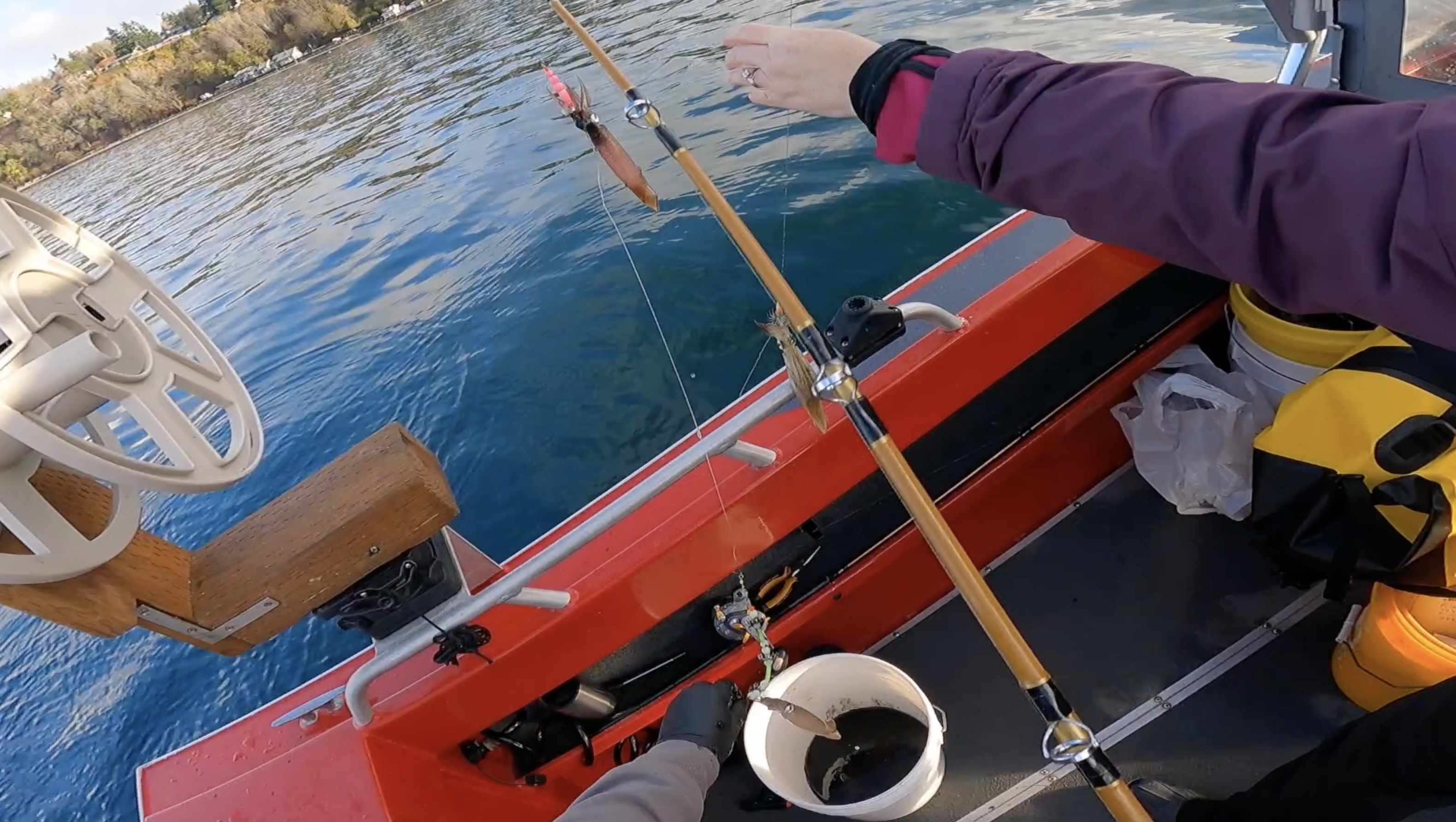
One of my favorite late fall into wintertime activities is squid jigging. And look, squid don’t put up a fight or create the excitement of peeling line like some of the fish we catch, but squid jigging absolutely belongs in your PNW harvest recreation calendar!
This blog post is all about the secret weapon I’ve developed (stolen?) to out-squid jig your friends on your boat and all the boats around you by having a slightly different gear approach.
First off, let’s not get carried away here. I’m not saying I always out-fish everyone at squid jigging or I’m better than anybody or anything like that so before you get too excited mr squid jigging expert, take a seat and let me explain what I do that I think gives you an advantage over people who aren’t doing the same thing.
The upshot of what I’m about to share is that the technique applies to targeting suspended salmon or rockfish as well!
When people think of jigging on a boat for species like squid or rockfish, they instantly think light spinning tackle to maximize the fun. What if we maximize the catching though instead and still have fun?!?
You need a specific kind of rod to balance these two objectives, and I will ink (link?) some examples below.
We need a short casting rod that can handle a moderate amount of weight and has a decent sensitivity/taper paired with a line counter reel to maximize this technique.
Disclaimer: We are an Amazon affiliate, so you are supporting our site by using our links, though it’s the same price regardless of how you shop.
Check out two different options on Amazon as potential rods for this technique that will also be a great rockfish/salmon jigging rod:
The big difference between the two rods above is one is going to be that much more sensitive, which is certainly important in some of our fishing applications, but you can always get away with the Ugly Stick approach as well!
Pair it with my favorite low-profile budget line counter by Okuma and you have a great start! Fill it with some braided fishing line and you are set.

The basics of the technique start with finding a pile of squid from your boat by either looking at your fish finder until you get on top of them and either drifting or anchoring on them. This is a longer topic to explore because either drifting or anchoring could be appropriate.
Oftentimes you will find a group of boats really close together either anchored or using spot lock technology on their bow mount motors to stay on top of them and then tethering to each other using dock lines.

The presence of many boats all dropping jigs tends to keep a squid school interested and occupied vs having to chase them all over the shoreline and dramatically increases everyone’s effectiveness.
So don’t be shy! Get in close, take your coat off, and stay awhile! Now that we’ve found a pile of squid and we are on top of them, we move to the main aspect of the technique I’m going to explain.
Squid are most often found near the bottom of the water columns. And many folks drop their gear all the way to the bottom, reel up a crank, and jig jig jig until they feel that slight resistance like you’ve hooked someone else’s line or something. Just creates a little bit of drag. As soon as you feel that, SET THE HOOK!
Okay, just kidding, there’s no hook setting here. As soon as you feel that, crank on that reel to keep pressure on the squid and before long you will get a nice face full of ink for your troubles as you hastily bring your squid up and over the rail.

Also, it’s an acceptable strategy to reel the squid up to your buddy’s face so he gets a nice face full of ink!
Yes, that basic approach puts a lot of squid in your boat.
However, sometimes the squid are like 10-20 ft above the bottom, or they are mid-water column. Say 40-60 ft in 100 ft of water. That’s where this line counter technique shines!
Since you already know what squid looks like on the fish finder, you constantly adjust your depth to match what you are seeing on the fish finder. Drop down to that level, small jig pause, jig pause, and then bam! Another squid coming up!
Pretty simple, right? There’s a little more to it for squid jigging, as having the right terminal gear is important as well. It can work with the standard string of jigs you use now, but I like to be surgical and fast about getting to the exact right depth quickly to keep catching squid, so this is how I accomplish that:

My squid jig terminal setup is built around this unweighted beaded squid jig setup by Otori. I run 40-50 lb fishing line from the top of that to the bottom of another weighted squid jig like this one. But you can run whatever your favorite weighted squid jig at the top of the setup as long as you run the beaded unweighted one below.
Get some 2 oz or even 3 oz cannonball sinkers to attach to the snap swivel at the bottom of the unweighted beaded squid jig setup and you have a completely ready-to-fish setup that allows you to surgically drop and catch squid to your heart’s content.

There you go, you now have everything you need to know to catch as many squid as I do. Though that’s unlikely because of just how good at squidding I am! The only thing left is to find a non-small-craft-advisory day in November to go squidding during…Good luck with that!